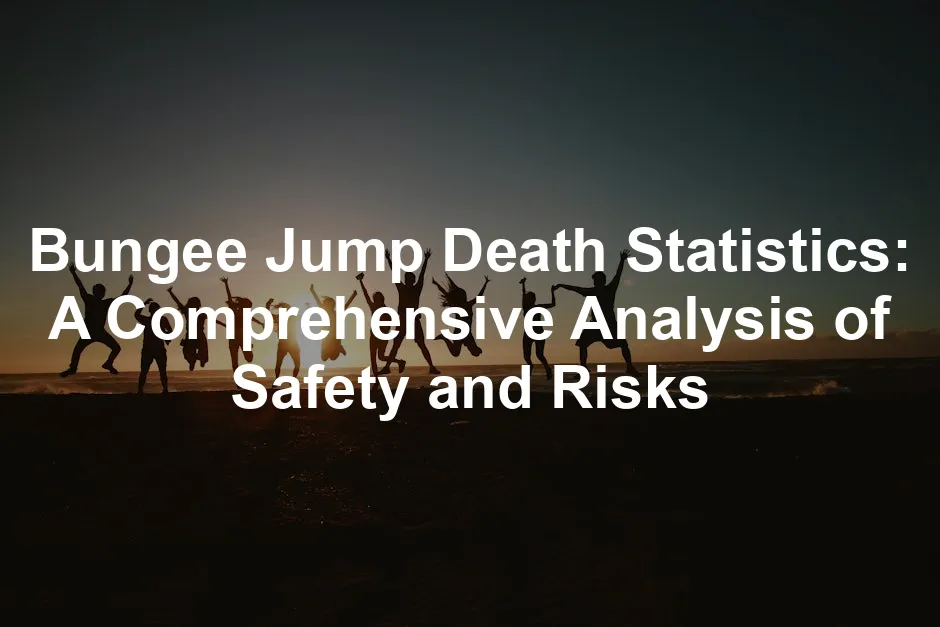Introduction
Bungee jumping is an extreme sport that has captured the hearts of thrill-seekers around the globe. Imagine soaring through the air, heart racing, as you leap from a towering platform. Sounds exhilarating, right? This daring activity has seen a meteoric rise in popularity over the past few decades, drawing adventurers to breathtaking heights and jaw-dropping locations. From the iconic Kawarau Bridge in New Zealand to the towering Macau Tower in China, the world is dotted with spots that make your adrenaline spike.
However, with great thrills come great concerns. Safety issues have often been at the forefront of discussions surrounding bungee jumping, and for good reason. The risks associated with this extreme sport can be daunting. Mismanagement, equipment failures, and human error can lead to serious accidents. It’s crucial to understand the implications of these risks, especially when they can have dire consequences.
Understanding bungee jump death statistics is vital in the context of safety measures and industry standards. These statistics help us gauge the level of risk involved in this thrilling activity. They also shed light on how operators can improve safety protocols, ensuring that jumpers have a safe and enjoyable experience.
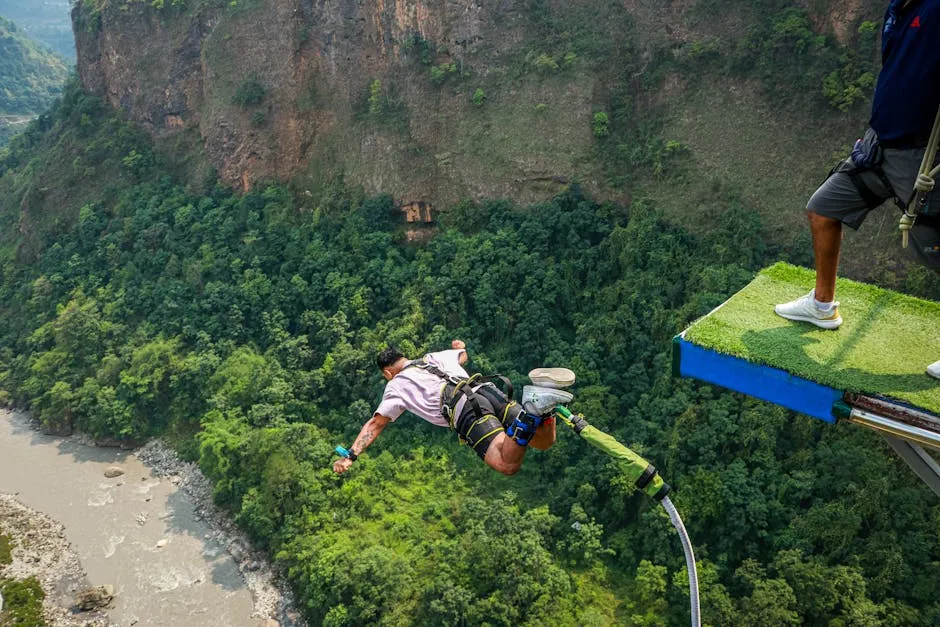
And speaking of safety, every thrill-seeker should be prepared for the unexpected! A Portable First Aid Kit is an essential item for any adventure. With everything from band-aids to antiseptic wipes, it ensures that minor mishaps don’t spoil your adrenaline-fueled fun. Plus, it’s compact enough to fit in your backpack—because who wants to carry around a full medical bag when you’re trying to leap off a bridge?
This article aims to provide a detailed analysis of bungee jump death statistics and injury rates. We’ll explore the historical data on fatalities, the common causes of these incidents, and the safety measures that have been implemented in the industry. By the end, you’ll have a clearer picture of the risks and safety standards associated with bungee jumping, allowing you to make an informed decision about taking that leap.
The History of Bungee Jumping
Origins of Bungee Jumping
Bungee jumping has deep cultural roots that trace back to the island of Vanuatu. Here, men would jump from wooden platforms with vines tied to their ankles as a rite of passage. This tradition was not merely about the thrill; it symbolized bravery and the transition into adulthood. Fast forward to the late 1980s, and we see the commercialization of this ancient practice. A.J. Hackett, an adventurous spirit from New Zealand, opened the world’s first commercial bungee jumping site on the Kawarau Gorge Suspension Bridge in 1988. He transformed a cultural ritual into a thrilling adventure that would attract thousands.
Evolution of the Sport
Since its inception, bungee jumping has evolved tremendously. The sport has expanded globally, finding its way into the hearts of adventure tourists everywhere. From the heights of the Europabrücke Bridge in Austria to the stunning views of the Verzasca Dam in Switzerland, bungee jumping has carved a niche in the adventure tourism market. Facilities have sprouted worldwide, with diverse geographic distribution ensuring that no matter where you are, a bungee jump is likely just around the corner. This growth reflects not just the thrill-seekers’ desire for adventure but also the industry’s commitment to providing safe and exhilarating experiences.
As we look at bungee jumping’s history, it is essential to recognize how the sport has transformed from a local custom into a global phenomenon, all while continuing to grapple with the challenges of ensuring safety in a high-risk environment.
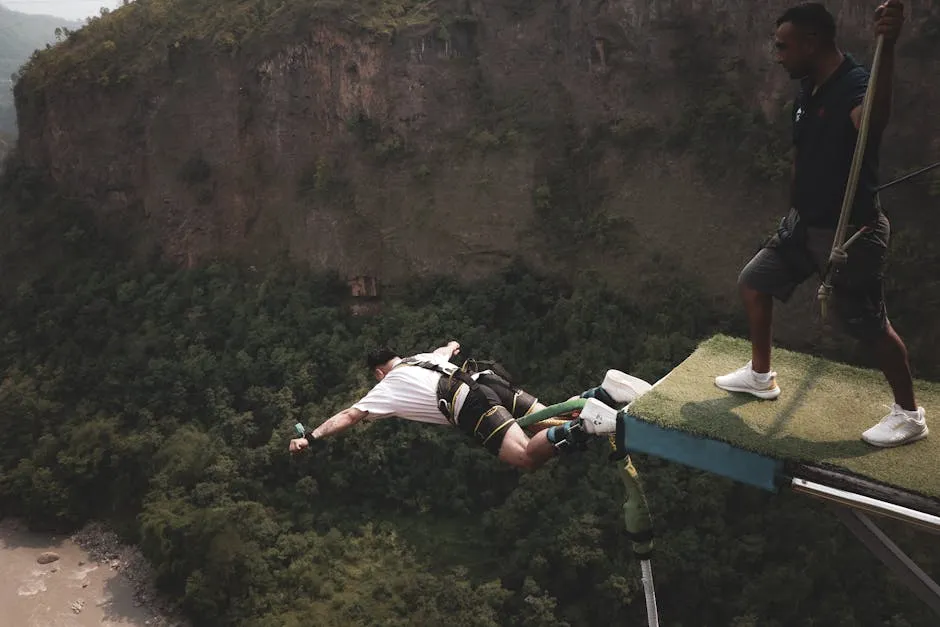
And if you’re planning to document your thrilling experiences, consider investing in an Adventure Sports Photo Book. Capture those breathtaking moments and relive the adrenaline rush long after the jump!
Bungee Jumping Statistics Overview
General Bungee Jumping Statistics
Bungee jumping has become a popular thrill-seeking activity across the globe. Many individuals crave that rush! According to recent data, the bungee jumping industry is thriving, with participation rates continuing to climb. Adventure travelers are increasingly drawn to this extreme sport, seeking unique experiences that provide unforgettable adrenaline highs.
Some of the most popular bungee jumping spots are breathtaking. The Kawarau Bridge in New Zealand is iconic. It offers a stunning view of the picturesque gorge below. Then there’s the Macau Tower in China, standing tall at 764 feet. If you’re feeling adventurous, you might want to check out the Verzasca Dam in Switzerland, where you leap from a staggering 1,220 feet!
In the United States, notable locations include the Royal Gorge Bridge in Colorado and the Navajo Bridge in Arizona. These sites attract thousands of jumpers annually, providing thrilling experiences while promoting safety. With bungee jumping’s increasing popularity, the global market for bungee jumping equipment is expected to exceed $83.6 million by 2027. So, if you’re considering taking the plunge, make sure you have the right gear!

There’s no better way to ensure you’re ready for that leap than with a Bungee Jumping Equipment Guide Book. This guide will walk you through the essential equipment and safety measures, making sure you’re well-prepared before you take that leap into the unknown.
Death Statistics
When discussing bungee jumping, safety is paramount. While deaths linked to this extreme sport are rare, they do occur. Between 1986 and 2002, there were 18 recorded fatalities. In more recent years, specifically between 2015 and 2018, 5 fatalities were reported. These incidents emphasize the need for stringent safety protocols.
To put these figures in perspective, the chance of dying while bungee jumping is about 1 in 500,000 jumps. This statistic is comparable to other extreme sports, such as skydiving, which has a similar fatality rate. Interestingly, the risk of fatality in bungee jumping is lower than in activities like hang gliding, where the risk is significantly higher. It’s crucial to highlight that human error often contributes to fatalities. Proper training and equipment checks can mitigate these risks significantly.
Understanding the risks associated with bungee jumping can be informed by looking at skydiving fatality statistics, which provide context for the safety of both sports.
Injury Statistics
While fatalities are a concern, injuries can also occur in bungee jumping. Most injuries stem from equipment failure or operational mishaps. Common injuries include sprains, strains, and occasionally more severe injuries, such as neck or back injuries.
The overall injury rate for bungee jumping is approximately 0.61 mishaps per 1,000 jumps. This low number suggests that with strict adherence to safety measures, the risks can be minimized. According to reports, minor injuries like bruises and discomfort from the sudden deceleration can happen, but they are relatively rare.
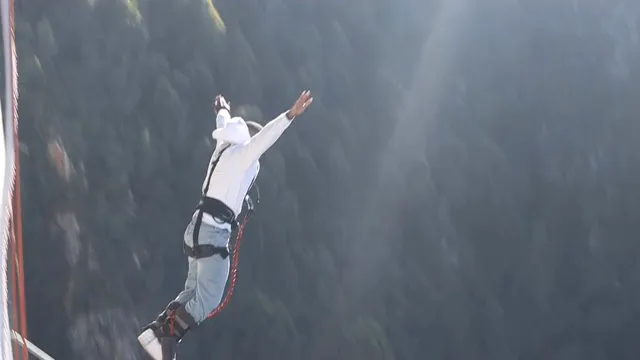
Jumpers should also be aware of potential eye injuries due to increased pressure during the jump. Following the instructor’s guidelines can help reduce these risks. As the industry evolves, the focus on safety continues to grow, ensuring that bungee jumping remains an exciting yet secure adventure activity for all thrill-seekers.
Safety Measures in Bungee Jumping
Bungee jumping can be an exhilarating experience, but safety is paramount. To ensure that thrill-seekers enjoy their jumps without worry, robust safety measures are in place. Let’s break down the core components that contribute to a safe bungee jumping experience: equipment standards, staff training, and regulatory oversight.
Equipment Standards
Bungee jumping relies heavily on specific equipment. The three main components are cords, harnesses, and platforms.
Cords: The heart of bungee jumping safety is the elastic cord. These cords are engineered to withstand immense forces. Made from high-quality materials, they are tested rigorously before use. A faulty cord can lead to catastrophic outcomes, so operators must utilize cords rated for the weight and height involved in each jump.
Harnesses: Jumpers are secured using full-body harnesses. These harnesses distribute the force of the jump across the body, reducing the risk of injury. A snug, well-fitted harness can make all the difference. Operators should ensure that all harnesses are regularly inspected for wear and tear.
Platforms: Safety also begins at the launch point. Platforms must be sturdy and securely anchored. They should be designed to handle multiple jumpers while providing adequate space for preparation. Regular inspections ensure that platforms remain safe and sound.
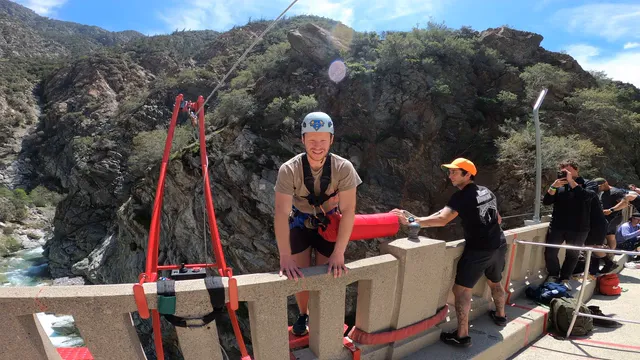
Maintenance and Inspection: Regular maintenance and inspection of equipment are crucial. Operators should adhere to a strict maintenance schedule, checking cords, harnesses, and platforms for any signs of damage. A simple visual inspection isn’t enough; thorough checks involving stress tests are necessary to ensure everything functions flawlessly.
Staff Training and Protocols
Great equipment is useless without well-trained staff. Bungee jumping operators and instructors undergo extensive training to handle various scenarios safely.
Training Requirements: Operators must complete a comprehensive training program that covers equipment use, emergency procedures, and jumper safety. This training is not a one-time event; ongoing education keeps staff updated on industry standards and best practices.
Safety Protocols: Strict safety protocols are essential. Before any jump, instructors conduct thorough safety briefings, explaining proper jumping techniques and addressing any questions. They ensure that jumpers are physically and mentally prepared for the experience. Additionally, protocols outline emergency procedures, including how to respond to equipment failure or a jumper experiencing distress.
Communication: Clear communication between instructors and jumpers is vital. Instructors should encourage questions and provide reassurance. Building trust helps reduce anxiety, making for a more enjoyable experience.
Regulatory Oversight
The role of regulatory bodies in bungee jumping cannot be overstated. These organizations help establish safety standards that operators must follow.
Safety Standards: Regulatory bodies set guidelines for equipment specifications, staff training, and operational procedures. Compliance with these standards enhances safety across the industry. Operators found failing to meet these requirements face penalties, which encourages adherence.
Safety Certifications: Many regions require operators to obtain safety certifications. These certifications demonstrate that an operation meets or exceeds the established safety standards. Jumpers should always check for these certifications before choosing an operator. A reputable company will proudly display its certifications and follow best practices to ensure jumper safety.
Preventing Accidents: The combination of rigorous equipment standards, well-trained staff, and strict regulatory oversight significantly reduces the risk of accidents. While no adventure sport is without risk, these measures work together to create a safer environment for thrill-seekers.
In conclusion, bungee jumping can be a safe and thrilling experience when the right safety measures are in place. By understanding the equipment standards, staff training protocols, and regulatory oversight, jumpers can make informed decisions and embrace the adventure with confidence. So, if you’re ready to take the plunge, ensure you’re jumping with a certified operator who prioritizes safety above all else!
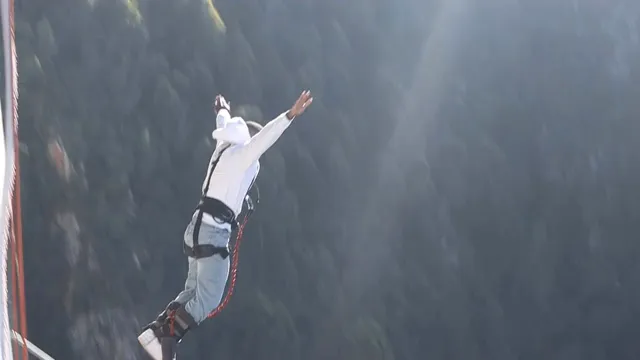
Risk Comparisons: Bungee Jumping vs. Other Extreme Sports
Comparative Analysis with Skydiving
Bungee jumping and skydiving often share the spotlight when it comes to extreme sports. Both offer thrilling experiences, but how do their risks stack up?
According to recent statistics, the fatality rate for bungee jumping is approximately 1 in 500,000 jumps. In comparison, skydiving has a fatality rate of about 1 in 101,083 jumps. Quite the difference, right? This means that skydiving is nearly five times more dangerous than bungee jumping.
But why do people perceive these two activities so differently? The perception of risk often hinges on the mechanics of each sport. Bungee jumping involves a controlled drop with a cord, while skydiving requires freefalling from thousands of feet in the air. The sheer height associated with skydiving can make it feel riskier, even if the stats say otherwise.
Moreover, the environment plays a role in risk perception. Bungee jumpers typically leap from designated platforms with safety protocols in place. Skydivers, however, must navigate variables such as weather conditions and landing zones. Hence, the jumpers’ mindset also influences how they weigh the risks of each adventure.

Comparison with Other Adventure Sports
Now, let’s widen the lens to include other high-risk sports like BASE jumping, rock climbing, and extreme skiing.
BASE jumping, for instance, has a staggering fatality rate of around 1 in 60 jumps! That’s significantly higher than both bungee jumping and skydiving. Why? BASE jumpers leap from fixed objects, facing lower altitudes and less time to react, which amplifies the risks considerably.
When we look at rock climbing, the injury rates vary, but fatality rates hover around 1 in 1,000 climbs for traditional climbing. The risks here are often linked to falls and equipment failure, similar to bungee jumping. Yet, rock climbing carries the added danger of environmental factors, such as rock stability and weather changes.
Extreme skiing also presents challenges. The fatality rate is roughly 1 in 1,400 participants, but injuries are common. Skiers can face avalanches, collisions, and falls, making safety protocols crucial.
So, where does bungee jumping stand in this adventurous hierarchy? It ranks relatively low on the danger scale, primarily due to strict safety regulations, reliable equipment, and thorough training for instructors. While all these sports carry inherent risks, bungee jumping offers a safer option for those seeking thrills without the heightened dangers of activities like BASE jumping or extreme skiing.
Addressing Common Misconceptions
Myths About Bungee Jumping
Bungee jumping often sparks a flurry of misconceptions. One common belief is that equipment failure is the leading cause of accidents. While equipment malfunctions can happen, they are exceedingly rare due to strict safety checks. In fact, human error usually accounts for most fatalities.
Another misconception is that bungee jumping is akin to free-falling. In reality, the bungee cord’s elasticity allows for a smooth rebound, preventing the harsh impact some imagine. Most jumpers report feeling exhilarated, not terrified, during their jump.
Some also fear that they might hit the ground during the fall. However, that’s unlikely! Jumpers are secured with harnesses designed to accommodate their weight and leap height.
Lastly, many believe that only the reckless attempt bungee jumping. In truth, jumpers range from the adventurous to the cautious. Age, fitness level, and experience vary widely among participants.
Understanding these myths can help demystify the sport and encourage more thrill-seekers to consider bungee jumping as a safe option for their next adventure.

And if you’re looking to dive deeper into the world of extreme sports, an Extreme Sports Magazine Subscription could be just what you need to stay informed about the latest trends and gear in the adventure sports world.
The Psychological Aspect of Bungee Jumping
Bungee jumping is not just a physical challenge; it’s a psychological one too. Many potential jumpers hesitate due to a cocktail of fear and anxiety. The thought of leaping into the abyss can send shivers down anyone’s spine. It’s only natural! Our brains often play tricks on us, amplifying fears that may not be grounded in reality.
First-time jumpers frequently dread equipment malfunctions, miscalculating their weight, or simply the fear of heights. Education plays a crucial role here. When individuals learn about the safety measures in place, many of their fears can be alleviated. Knowing that the bungee cord is rated for multiple times their weight and that trained professionals are overseeing the jump helps calm those jittery nerves.
Statistics also act as a reassuring blanket. With a fatality rate of about 1 in 500,000 jumps, bungee jumping is statistically safer than everyday activities like driving or even falling down the stairs. By sharing such data, operators can help demystify the sport and bolster confidence among would-be jumpers.
Moreover, programs that provide insight into the experience can help fuel excitement rather than fear. Stories from seasoned jumpers often highlight the exhilarating rush and the sense of accomplishment that follows the leap. These testimonials can transform hesitation into enthusiasm.
So, if you’re feeling the urge to conquer that fear, remember: knowledge is power! Embrace the thrill with a well-informed mind, and you just might find yourself jumping into the adventure of a lifetime.

Conclusion
Bungee jumping is often shrouded in misconceptions and fear, but understanding the associated statistics reveals a different story. While the activity carries inherent risks, those risks can be significantly mitigated through proper safety measures and protocols.
Over the years, bungee jumping has garnered a reputation for being one of the safer extreme sports. Historical data shows that there were 18 recorded fatalities between 1986 and 2002, and 5 fatalities reported from 2015 to 2018. With a startlingly low fatality rate of approximately 1 in 500,000 jumps, it’s evident that bungee jumping is safer than many might believe. In fact, the risks associated with this thrilling sport pale in comparison to more common activities like driving, where the likelihood of accidents is much higher.
Safety measures are constantly evolving. Bungee jumping operators adhere to strict equipment standards and staff training requirements, ensuring that every jump is as safe as possible. Regular inspections and maintenance of equipment, alongside comprehensive safety briefings for jumpers, create a controlled environment that prioritizes safety.

And if you’re planning to take your adventure to the next level, why not get a GoPro HERO10 Black Action Camera? Capture every thrilling moment and relive your jumps from a whole new perspective!
It’s essential for potential jumpers to approach bungee jumping with a well-informed perspective. Understanding the statistics, safety measures, and the psychological aspects of jumping can transform fear into excitement.
So, if you’re considering taking the leap, remember that countless thrill-seekers before you have done the same. With the right knowledge and preparation, you can enjoy the exhilarating experience bungee jumping offers while minimizing risks. Embrace the thrill and make an informed decision; you might just find that the jump of a lifetime awaits you!
FAQs
What is the fatality rate of bungee jumping?
The fatality rate of bungee jumping is approximately 1 in 500,000 jumps. This statistic highlights the rarity of fatalities in this extreme sport, making it one of the safer options available for thrill-seekers.
How many people have died while bungee jumping?
Between 1986 and 2002, there were 18 recorded deaths associated with bungee jumping. More recently, there were 5 fatalities reported between 2015 and 2018. These numbers reflect the importance of rigorous safety measures and proper training in the industry.
Is bungee jumping safe?
Yes, bungee jumping can be safe when conducted under strict safety measures. Operators follow rigorous protocols, including regular equipment inspections and thorough training for staff. Safety briefings for jumpers further enhance the experience, ensuring that everyone understands the risks and necessary precautions.
What are the most common injuries in bungee jumping?
Common injuries in bungee jumping include minor sprains, strains, and discomfort from the sudden deceleration. More severe injuries, such as neck or back injuries, can occur but are rare, particularly when jumpers adhere to safety guidelines.
How does bungee jumping compare to other extreme sports in terms of safety?
Bungee jumping generally has a lower fatality rate compared to other extreme sports. For example, skydiving has a fatality rate of about 1 in 101,083 jumps. Activities like BASE jumping and hang gliding carry significantly higher risks. Bungee jumping’s adherence to safety measures places it among the safer options for thrill-seekers.
And just in case you’re planning an outdoor trip, don’t forget to pack a Outdoor Waterproof Bluetooth Speaker. Enjoy your favorite tunes while you gear up for your next adventure!
Please let us know what you think about our content by leaving a comment down below!
Thank you for reading till here 🙂
All images from Pexels

